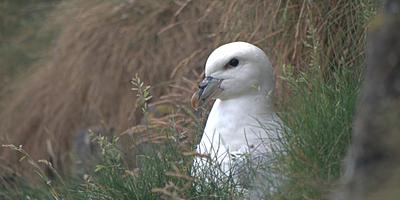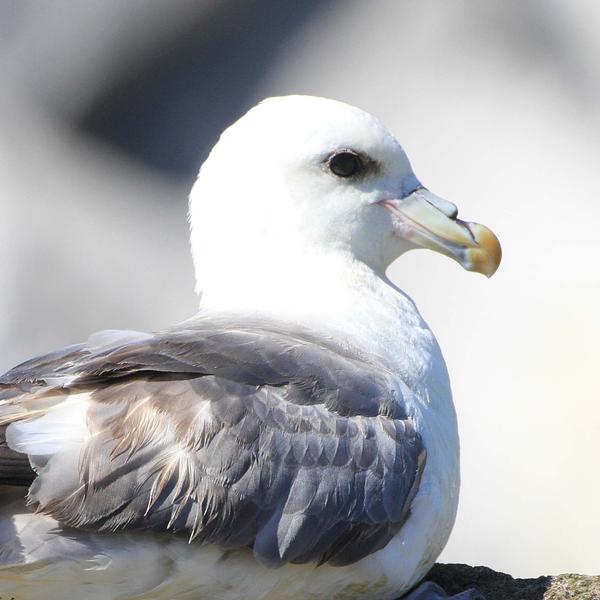
Fulmar
Fulmaris glacialis
What do they look like?
Part of the petrel family, Northern fulmars look similar to some gull species, with a white head and underside, grey wings and dirty yellow beak. However, their thick neck, dark eyes and straight, stiff wings set them apart. They have a tube-like ridge visible at the top of their beak. When on the move they generally fly low over the water with shallow wingbeats, although they will glide higher around coastal breeding sites. Fulmars feed in large flocks out in open water, catching small fish and crustaceans.
When can I see them in Scotland?
All year
Where can I see them in Scotland?
Fulmars can be seen in a number of coastal locations around Scotland. They are a common site in the Firth of Forth, on the north coast and out on the Northern Isles. They breed on rocky cliff faces and can often be found nesting amongst other seabird species. They are always offshore, feeding in flocks or resting in rafts, except when breeding.
Conservation Status:
In the UK, bird species with breeding, passage or wintering populations are assessed by experts and assigned to the Red, Amber or Green lists of conservation concern. Northern fulmars are currently an ‘AMBER’ listed species.

